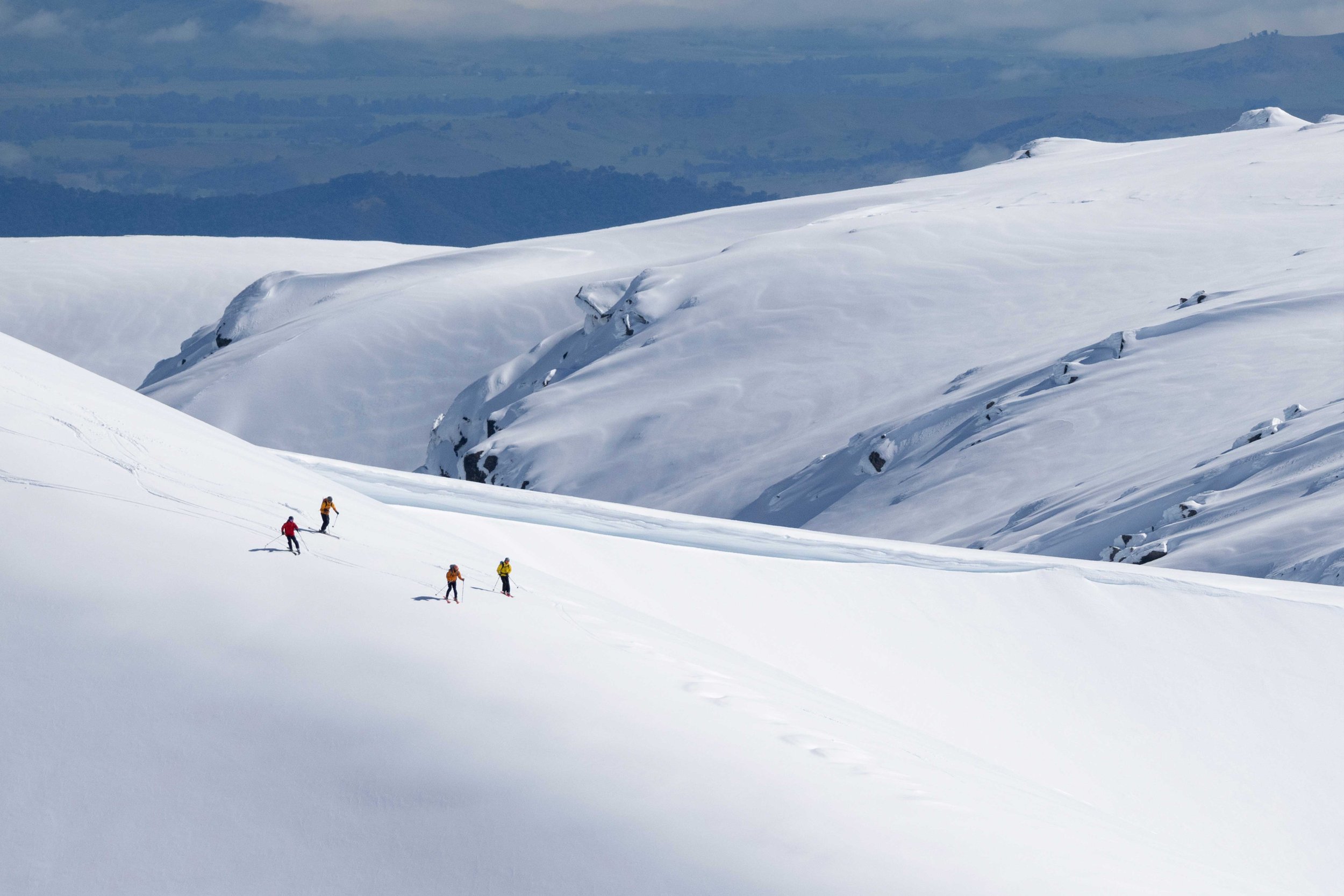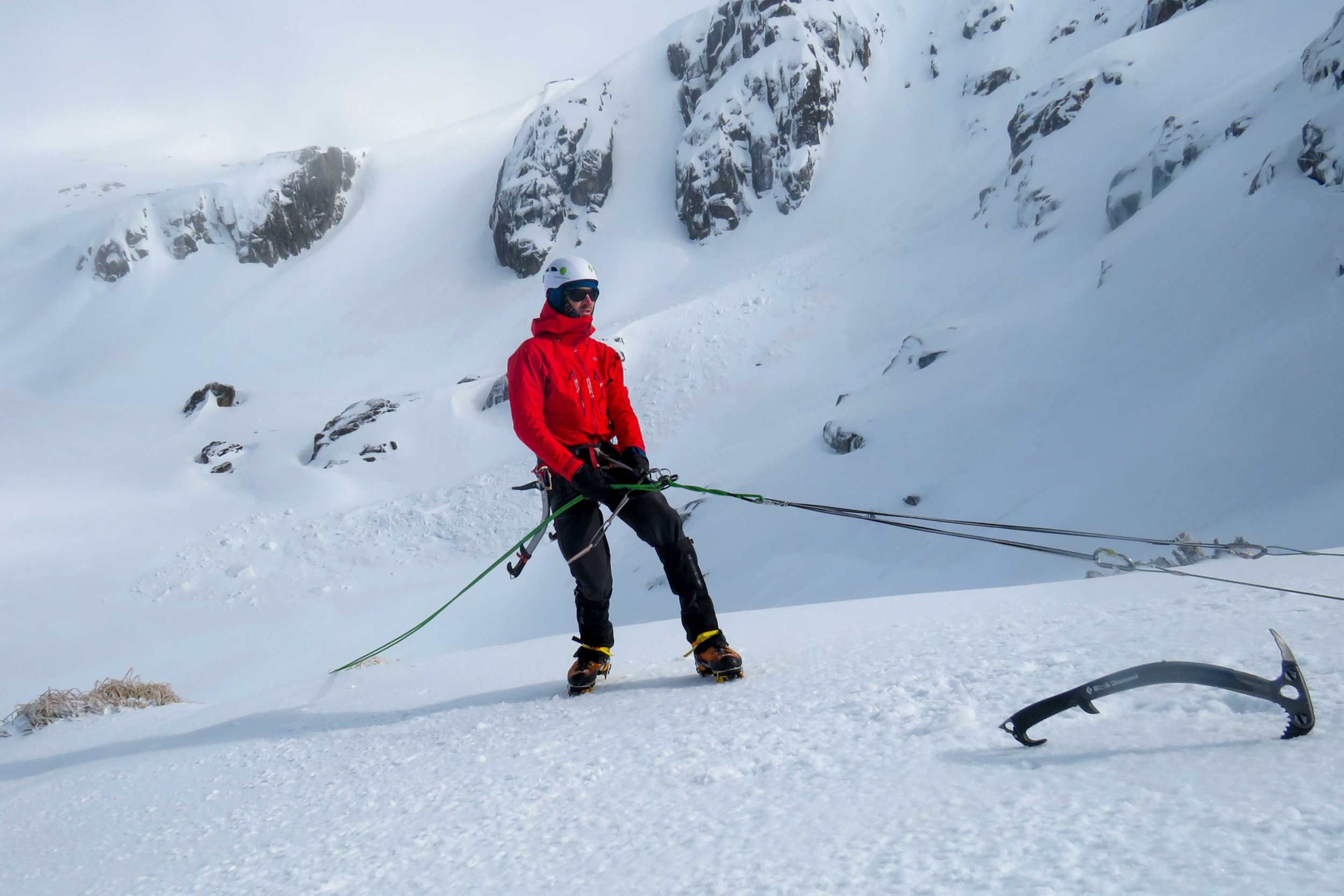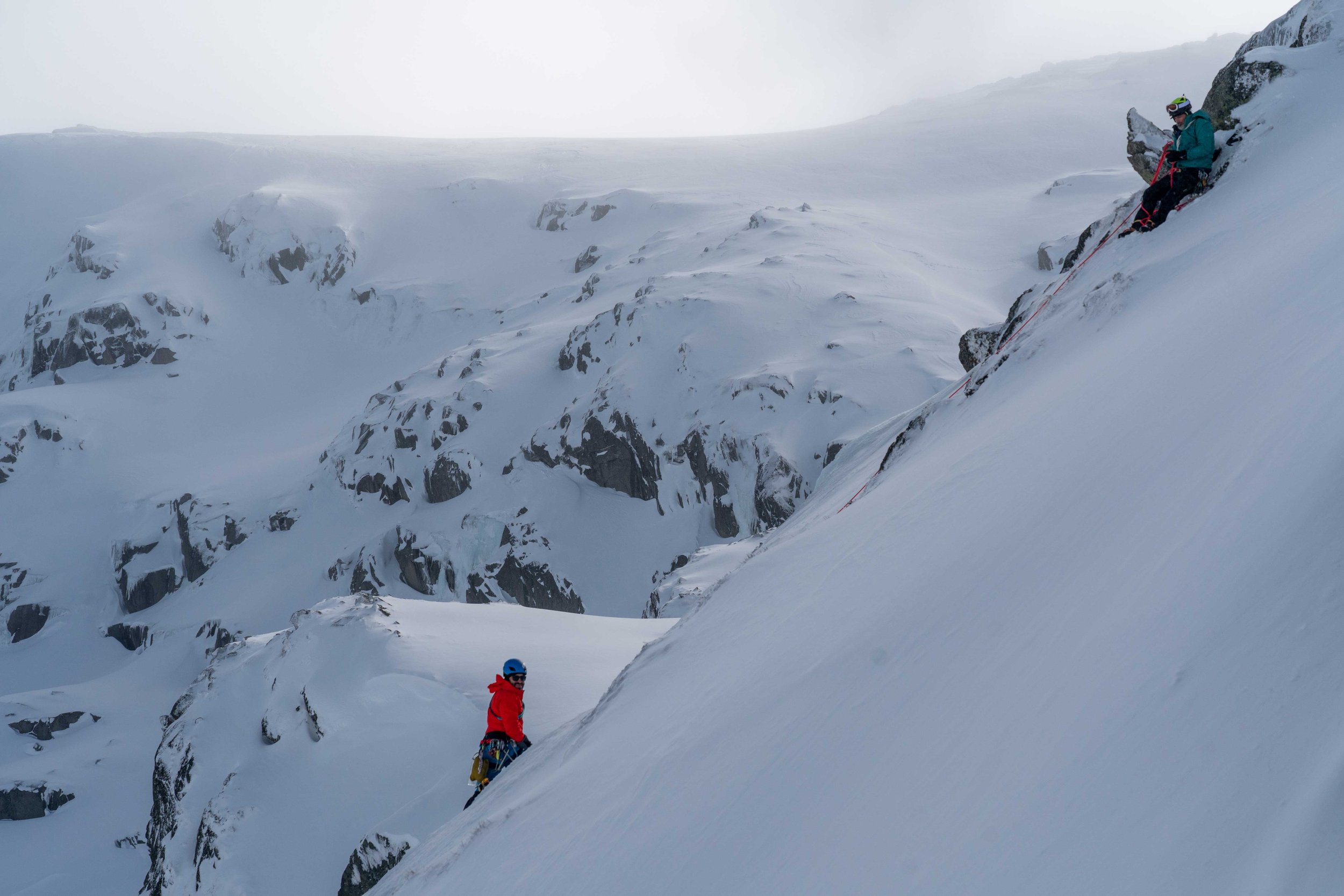
Ski Mountaineering Introduction Course
Learn the fundamental skills to start venturing safely into steeper backcountry terrain. Our experienced guides will cover topics ranging, from equipment and clothing systems to tour planning, and advanced ascent and descent techniques. We can cater this short course to focus on the skills needed for skiing steeps in Australia or more glaciated locations such as New Zealand or Canada.
Ski Mountaineering Short- Course
Tour Duration
Learning Outcomes
• The use of crampons and ice axes alongside Ski/Splitboard carry techniques to ascend steep terrain where skins lose their efficiency.
•Steep skinning techniques
•Steep transitions and how to avoid them.
•Assess slope stability and safety.
•Engage in discussions on equipment and clothing systems to lighten your load without compromising safety.
•Refine your skiing or snowboarding technique across diverse landscapes, optimizing energy conservation and minimizing fatigue on ascents, descents, and traverses.
•Upon request, delve into advanced roped ski techniques for navigating complex international terrain, including crevasse rescue, snow anchor construction, rappelling, and belaying skills tailored for skiers and split boarders in glaciated environments.
Whats Included
• Qualified and Experienced Snowy Mountains Backcountry guides
• All first aid/emergency gear
• Crampons and Ice Axes
• Avalanche safety equipment will be provided if necessary or requested.
Solo Traveller Enquiries
If you are a solo traveller looking to join this tour and form a group, please send an enquiry with the button below with your preferred dates, and we will inform you of the available options.
Can I join this tour?
Experience: Prior backcountry experience is necessary
Riding Ability: Advanced, must be able to link turns on variable snow conditions.
Fitness:
Good Fitness. We customise all tours to your group’s fitness level.
Distance: 12km
Elevation gain: 800-1000 m









Backcountry FAQs
What is Backcountry Skiing and Split Boarding?
Backcountry Skiing, or Alpine Touring (AT), is Skiing in unmarked, often remote areas outside traditional ski resort boundaries. It typically involves hiking or skinning uphill before skiing down. Split boarding is the equivalent activity for snowboarders. Snowboarders will use a snowboard that splits into two down the long centre axis, allowing them to walk uphill; they will then put the board back together and snowboard down.
What equipment do I need for Splitboarding?
Essential equipment for backcountry Splitboarding includes a splitboard with the appropriate hardware (Pucks), Splitboard skins, Stiff Snowboard boots, Splitboard Bindings, z-fold poles, and appropriate clothing layers. Additional safety gear can be a great
Is backcountry skiing/Splitboarding dangerous?
Backcountry skiing can be dangerous due to risks such as whiteouts, Icy surfaces, avalanches, variable snow conditions, and the sport's remote nature. Proper training, preparation, and awareness are essential to mitigate these risks. Getting a guide is a common way for people to learn how to mitigate these risks and to feel safe and secure in the backcountry.
What level of skier/boarder must I be to join a K7 Adventures Backcountry Tour?
K7 Adventures requires participants to be strong intermediate to advanced skiers or snowboarders who can maintain control and link turn on ungroomed surfaces. Backcountry snow is not ‘groomed’, so experience with off-piste (ungroomed trails) skiing or snowboarding is essential. It is crucial to honestly assess your skill level when joining a backcountry skiing or snowboarding group. If you want to discuss your ability level with a K7 guide, please complete the form below or call us on 0488 592 900.
What equipment do I need for backcountry skiing?
Essential equipment for backcountry skiing includes skis with touring bindings, climbing skins, ski boots compatible with touring bindings, poles, and appropriate clothing layers. Safety gear such as boot crampons, ski crampons, avalanche transceivers, shovels, and probes are optional in Australia, depending on conditions and tour location. Your K7 Adventures guide will assist you when to bring with these optional extras.
How do I start backcountry skiing or split-boarding?
To start backcountry skiing, it's recommended that you take an introductory course to learn essential skills such as backcountry safety, navigation, and proper equipment use. Joining a K7 tour or going with experienced friends can also be helpful.
How difficult are K7 Adventures Backcountry tours?
Our tours range from basic introductory levels to advanced and strenuous. Your fitness level will be the best indicator of which tour suits you.
Our Introduction to Backcountry course is recommended for those new to the backcountry. It will familiarize you with the fundamental skills and equipment needed for safe travel. The Summit and Ski Mt. Kosciuszko Tour can also be tailored as an introduction and is perfect for those wanting to summit Mt. Kosciuszko in winter.
The Main Range Explorer Course and the Blue Lake Circuit are ideal for those looking to learn more advanced backcountry skills while travelling further and skiing more. These tours require a good fitness level and some familiarity with backcountry equipment.c
Our Introduction to Ski Mountaineering Courses and the Western Faces Tour are more challenging, requiring higher fitness levels and experience. These tours involve longer days with significant elevation gains, so familiarity with your equipment is necessary to cover the ground needed.
Do I need special boots for backcountry skiing/ Splitboarding?
Backcountry skiing is more enjoyable when specific boots are designed for touring. These boots are typically lighter and have a walk mode, allowing for greater ankle flexibility during ascents. You can go backcountry touring using regular ski boots and frame touring bindings. Yet, it is not recommended as the boot is typically heavier and stiffer, resulting in fatigue and sore shins.
Splitboarders should aim to rent or buy stiff snowboard boots.


